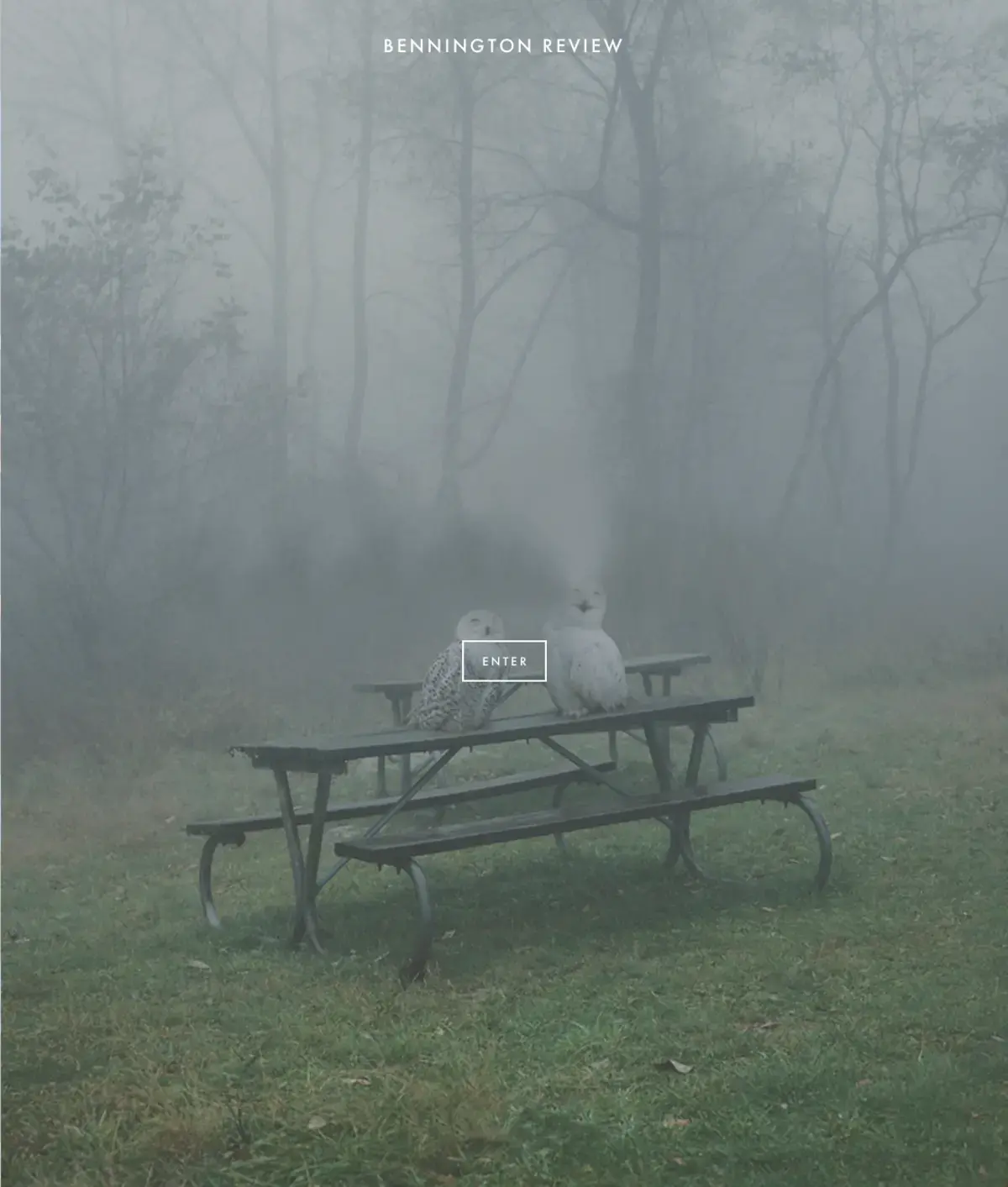Relaunching a Literary Legacy
Faculty member Michael Dumanis revives Bennington's literary journal after 30 years of dormancy by Madeline Cole '16

THE THIRD INAUGURAL ISSUE of Bennington Review, released in April 2016, looks more like a novel than a glossy magazine. Featuring work by writers such as Rae Armantrout, Tracy K. Smith, and Jericho Brown, and tightly focused on four genres of work, the Review presents a thoughtful new perspective in the larger literary conversation.
The original inaugural issue, printed in 1965, is an odd little collection between two sheets of raw blue paper. It was half-dedicated to the inauguration of the College’s new president, Dr. Edward J. Bloustein, and half-dedicated to the contents of a typical alumni magazine, complete with class notes.
On the final page, there is an editor’s note written by Laurence J. Hyman ’64, son of Shirley Jackson and Stanley Edgar Hyman. The note reads:
“This...essentially is what the magazine will look like. And what will it be?...It seems possible...that eventually this review will simply publish—with its own particular emphasis & taste—whatever is being written that is best, both by people here and by people who have no connection with the College whatsoever except a common concern for what is creative, fresh, free, new, honest, and actual. Time will tell.”
What Bennington Review was, is, and will be, continues to evolve as its editors change. In this way, the review has had four distinct iterations. The first inaugural issue could not be further removed from the review today, and the same could be said for those in between.
It took Bennington Review time to find its voice. Take, for example, the second issue of the first volume. It features black and white photographs of the campus juxtaposed against the text from an interview in which students spoke about Bennington.
Once established, however, the publication’s voice was not an immutable one—Robert Boyers, who was the editor from 1977 to 1983, oversaw a relaunched review that for the first time had a role in the national arts conversation. Featuring writers such as Joyce Carol Oates, Frank Kermode, and John Updike—many of whom Boyers made while working with Skidmore’s journal, Salmagundi—the new Review mirrored its new editor.
“The content in many ways reflects the sensibility, the taste, the instinct of an editor,” Boyers explained. “[I think] that [editorial choice] has to do with the question, ‘What do you think matters at a particular moment in time?’”
For Nicholas Delbanco—who had previously worked with Boyers on the first relaunch of the Review and later became the third editor—what mattered was that the publication “introduce a new and elegant artistic physical contribution to the larger conversation.” He points to an interview David Remnick did with John Ashbery as one example. Delbanco ran the Review until 1985, when it stopped publication.
The transformation of Bennington Review, reestablished last year after a 30-year hiatus by faculty member and poet Michael Dumanis, is striking—looking at the first and most recent issues side by side, there is no indication they have anything in common besides the name on the cover.
Between the covers, however, readers will still find cutting-edge work, now by authors such as Porochista Khakpour, Shane McCrae, and Dorothea Lasky.
Dumanis has dispensed with internal artwork in order to focus on one signature art piece, which is featured on the cover. The result is a publication thematically guided by its cover image, but dedicated to poetry, fiction, creative non-fiction, and film writing.
In another sense, however, Bennington Review has followed an important through-line, a direction articulated by Dumanis. He sees Bennington Review as a “curated space of a collection of strange, surprising, urgent new texts, each a different adventure, a discrete emotional and intellectual encounter with a voice.”
Dumanis writes, in the editor’s note of the inaugural issue, that when choosing work for the new issue he based his editorial decisions on “which poems and stories and essays most feel, through the charge of their language and subject and thought, as though they’re on the verge of taking flight.”
Dumanis’s relaunch is already hitting the radar of contemporaries, including The Rumpus. Earlier this year they praised the journal for its inclusivity (30% of writers are people of color and 60% are women) and called it “an exciting new literary outlet to watch.”
The second issue of Bennington Review, featuring work by Sean Adams ’08, Safiya Sinclair ’10, James Allen Hall MFA ’00, Irina Reyn MFA ’06, April Bernard MFA faculty member, and former editor Nicholas Delbanco, is now available in bookstores or by visiting here.